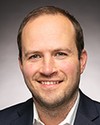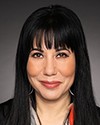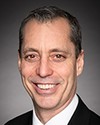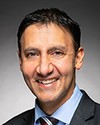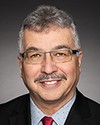Mr. Speaker, one month from now, we will celebrate Canada and the peace and prosperity we enjoy, and the remains of 215 indigenous kids as young as three were just found in unmarked graves at a so-called school that existed to eliminate indigenous people as indigenous people.
We, as Canadians, are often seen as champions of human rights around the world. Our charter has served as a model for other countries, and the remains of 215 indigenous kids at the Kamloops residential school are also a story of thousands of children stolen from their families and sent to unmarked graves across our country.
Millions of people from around the world have sought freedom in Canada and pursued safety in our multicultural society, and thousands of indigenous kids are buried in unmarked graves, abused, persecuted, murdered, all sanctioned by the state.
It is unthinkable, but known. When I first read the news, I knew it was known, but I still could not process it. I wrote to my constituents “at a loss for words when it comes to our shameful history”, and in place of my own, I shared the words of AFN National Chief, Perry Bellegarde, who wrote, “...while it is not new to find graves at former residential schools, it's always crushing to have that chapter's wounds exposed.”
Having found my words again with some effort, these four come to mind: This is our Canada. The question we face is what we will do about it.
At a minimum, we need to support a full investigation on every residential school site across Canada to ensure dignity for victims and proper accountability. The Truth and Reconciliation Commission wrote that, “The most basic of questions about missing children —Who died? Why did they die? Where are they buried?—has never been addressed or comprehensively documented by the Canadian government.”
Our government has been working with the National Centre for Truth and Reconciliation to document and previously committed almost $34 million, but it is the beginning not the end of that process. More than that, we need a renewed and more ambitious commitment to meet the TRC's calls to action.
Since 2015, we have seen considerable, albeit incomplete, action to meet those calls. It is easy to point to symbols and say that it is only words, but lifting almost 70% of long-term water advisories, legislating indigenous languages protection with associated funding, child welfare legislation with associated funding, legislating the UN Declaration on the Rights of Indigenous Peoples, and billions of federal funds invested in indigenous communities for housing, health and more, are not symbols.
My criticism is a different one. When the remains of 215 indigenous kids are discovered in Canada, when thousands more remain undiscovered, are we doing enough? As much as we have done, the answer is no.
I am fortunate in this position, as are all members, to meet people we would otherwise never have the opportunity to meet and to learn from people who enter our orbit who otherwise never would. For me, I have had the opportunity to learn about intergenerational trauma from constituent Tanya Talaga. I have also had the opportunity, because of our shared animal advocacy, to be closer to former senator, Murray Sinclair, than I otherwise would.
Having engaged in conversation with Senator Sinclair about what more we can do in our last conversation on the subject before his departure from the Senate, he pointed to the government's response to the COVID crisis, and he said to look at the scale of effort that was brought to bear in response to the COVID crisis. It is incredible. It is necessary, and it has been incredible. He then asked whether we would have had that same scale of crisis if it were only indigenous people affected. I do not think the answer is yes. I think that is a truth we have to turn our minds to, and we have to do better.
I think our government has done a lot, but we have to do better.

